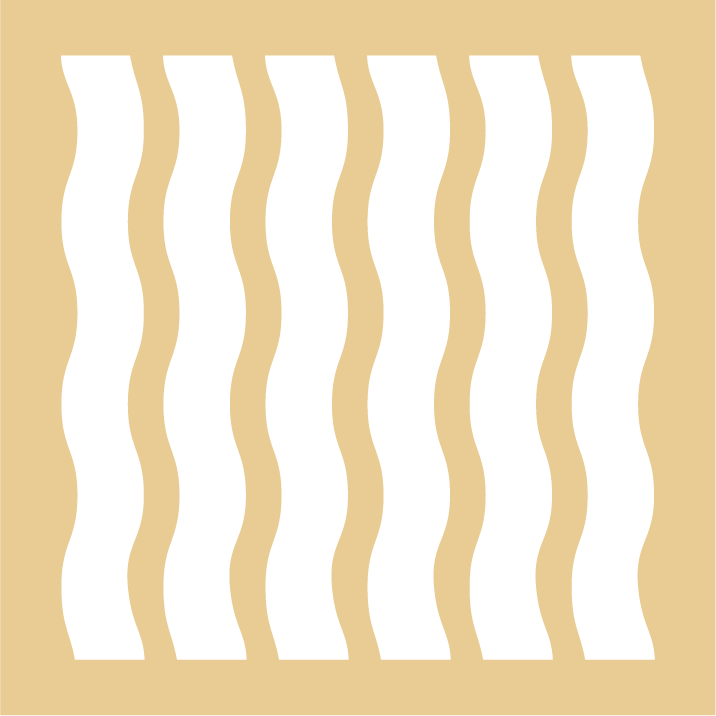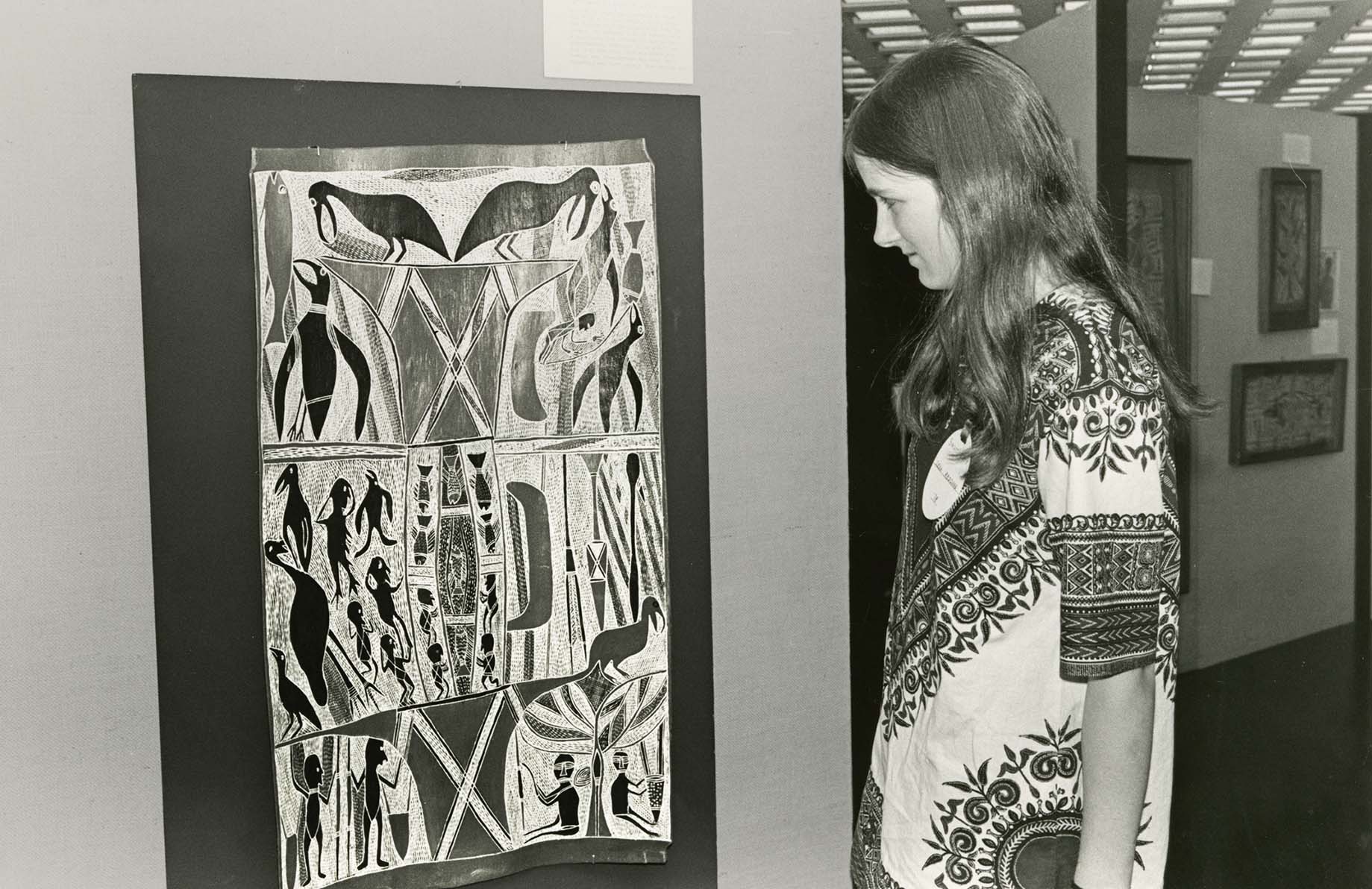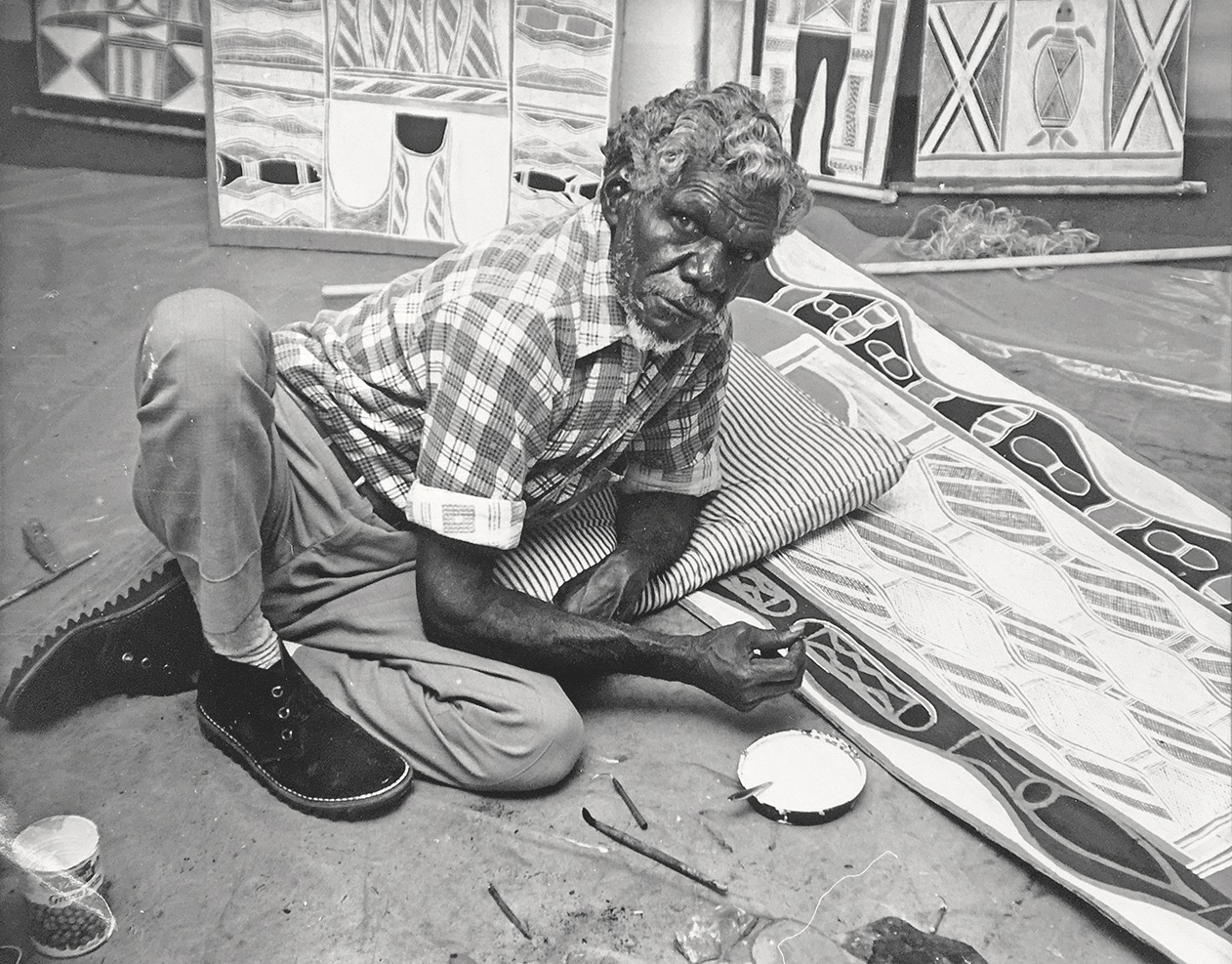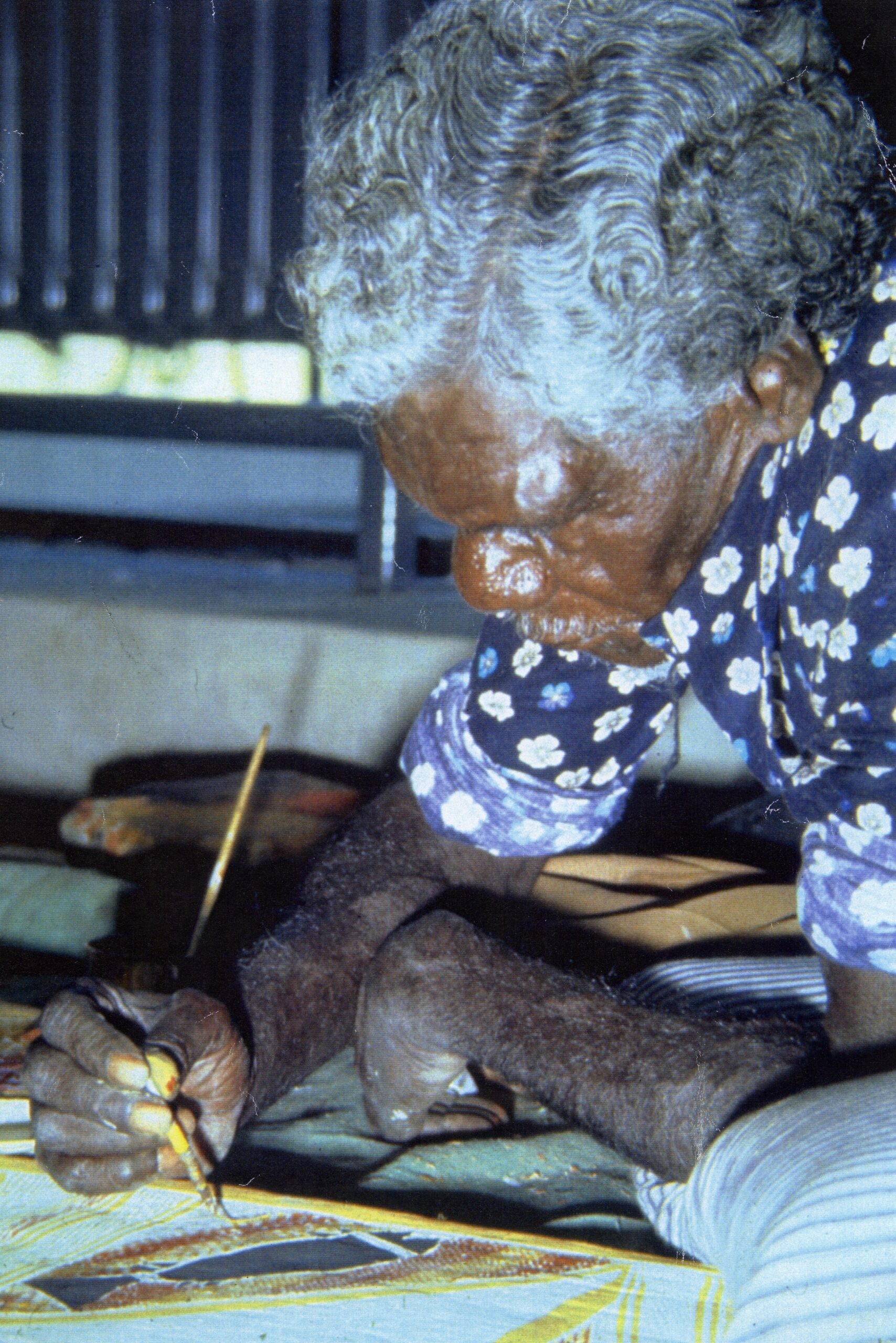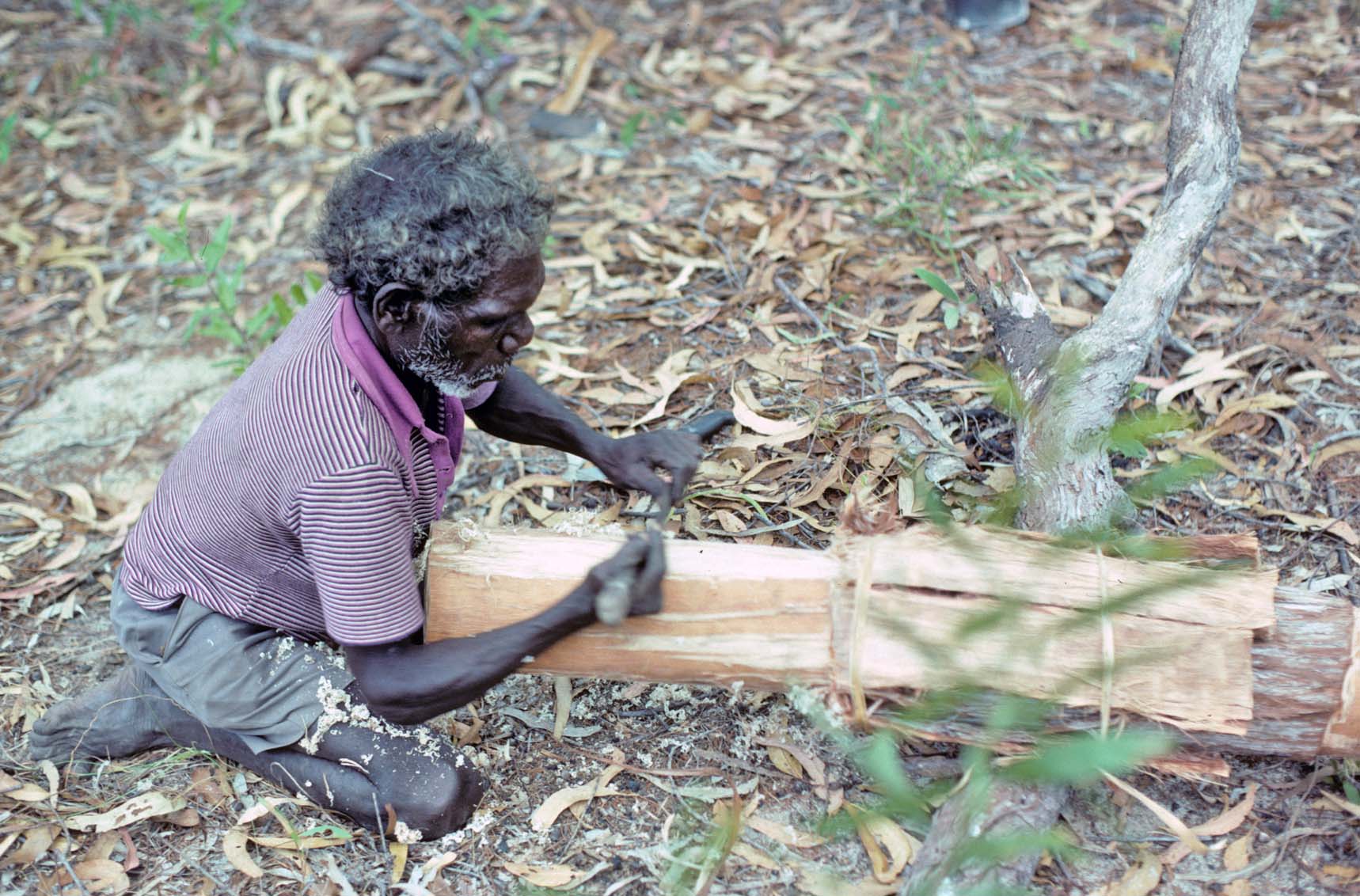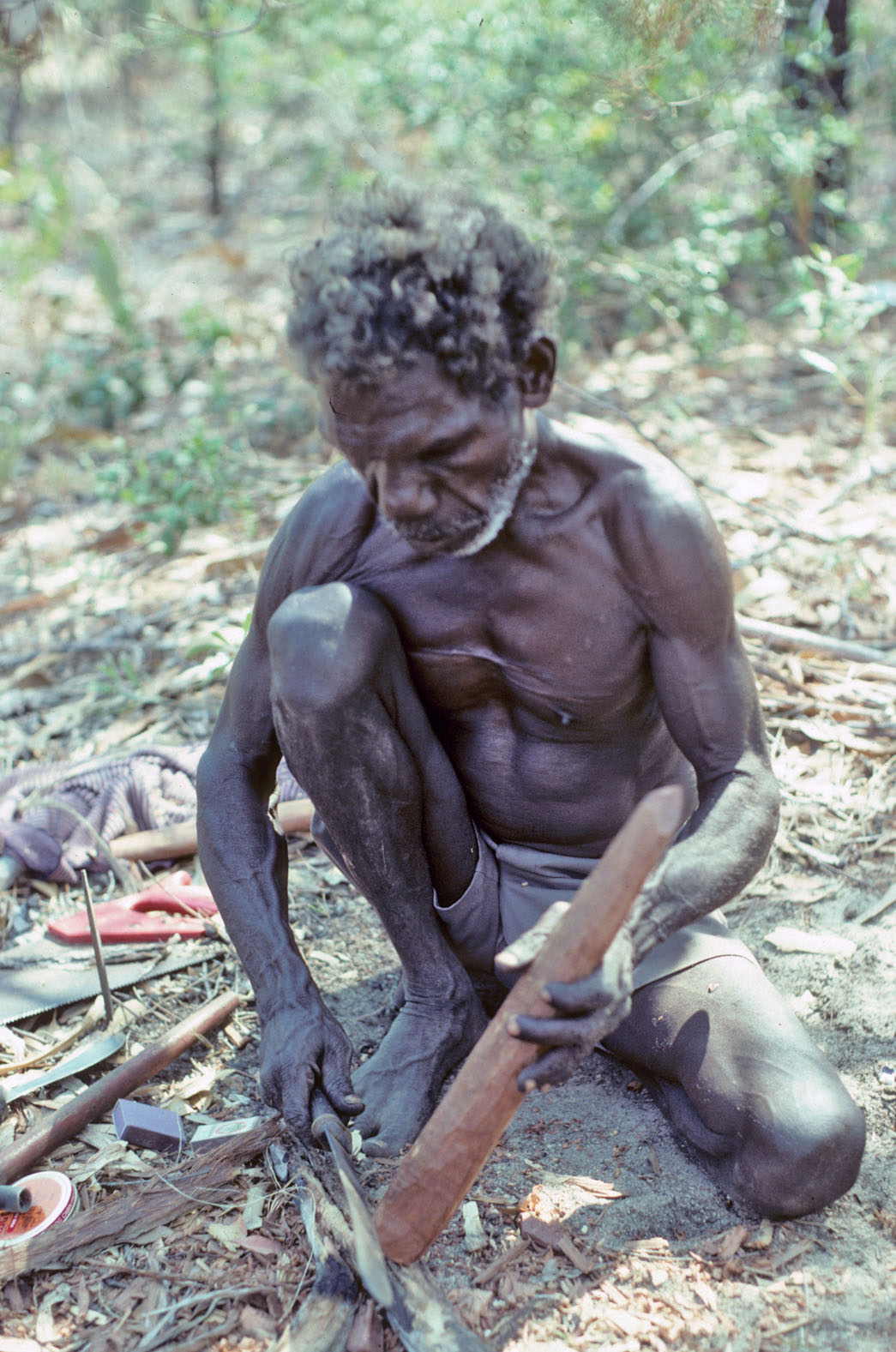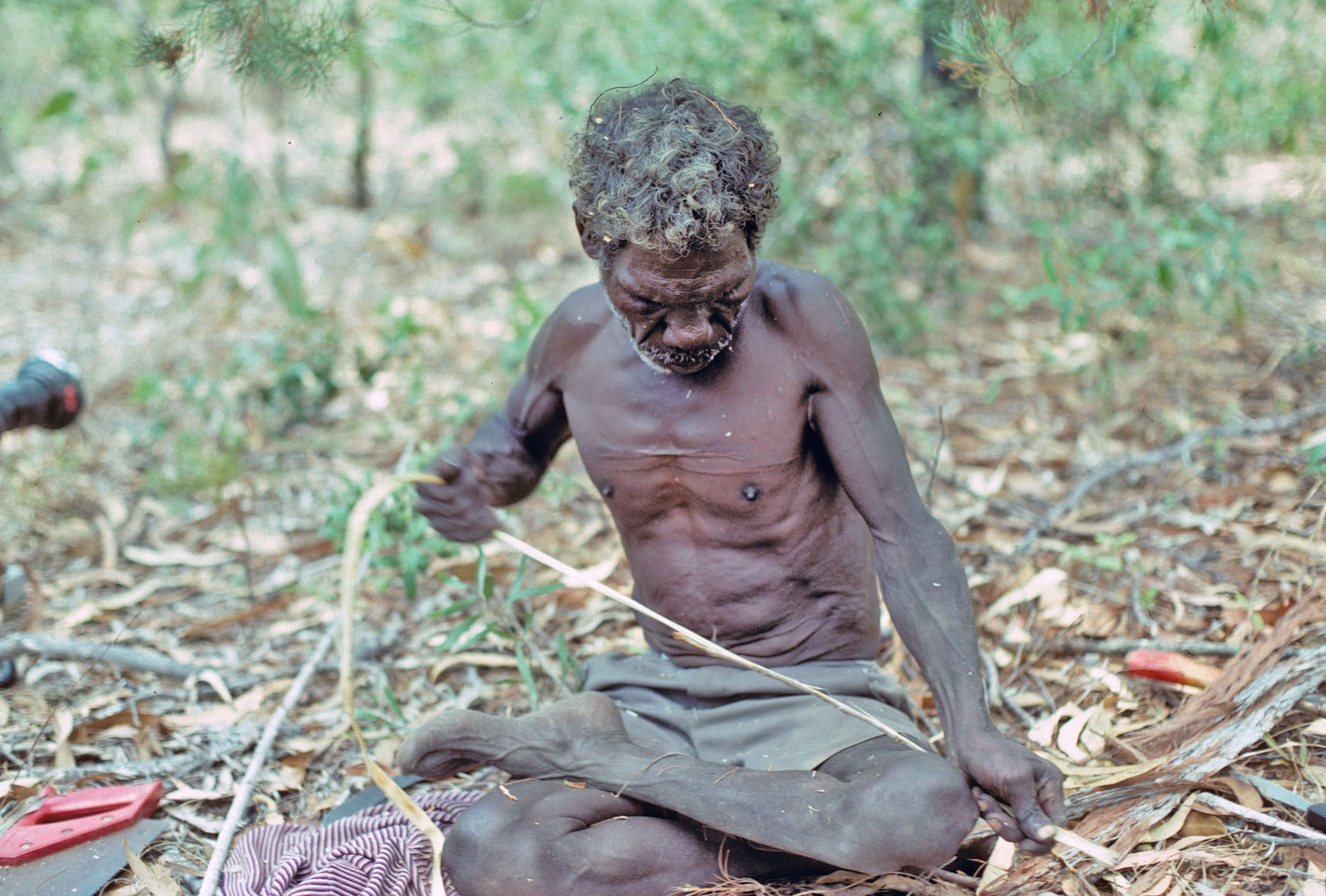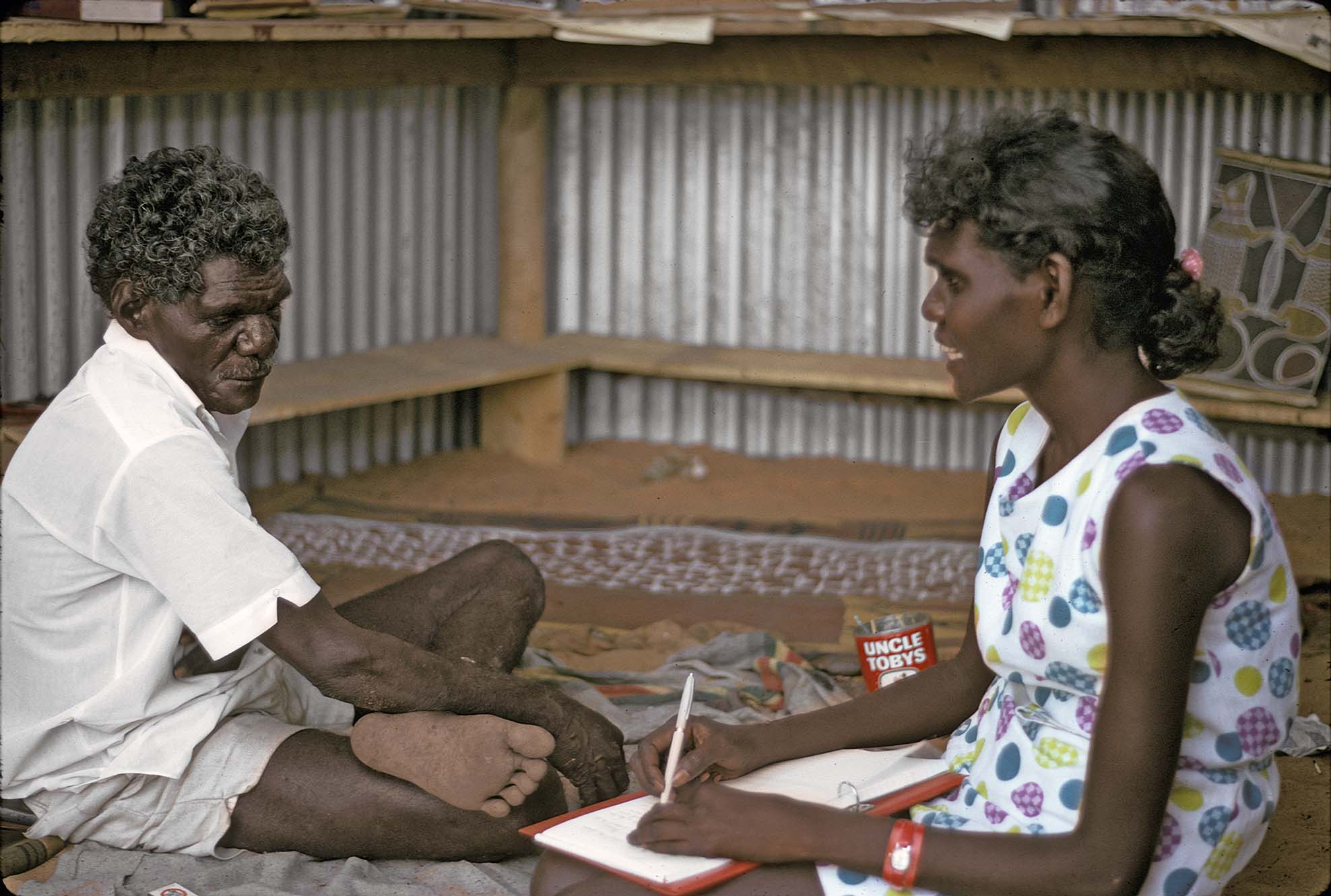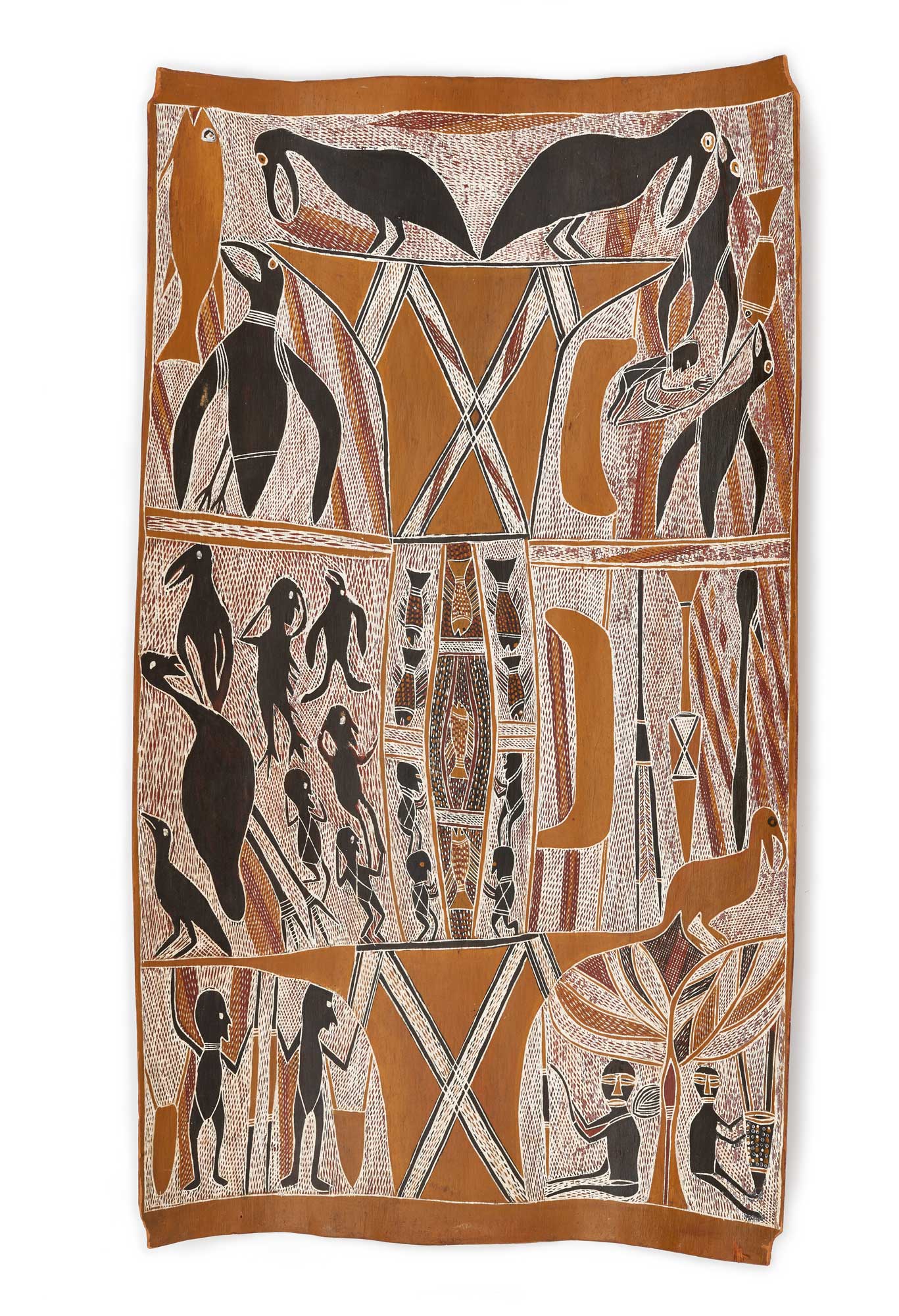
"At the yiŋapuŋapu, the sand crabs surface and eat the scraps. They are also known as djukurr, referring to the fat of the liver. And that is where they collect the fat of the liver, as well as the yinipuŋa, which means the bones that are left.
After the first yiŋapuŋapu [made by the ancestral women Nyapililŋu], Wurrpaṉ (the Emu ancestor) threw the spear called Ŋarrkitjpulu at the rock Yininydjurr, and water flowed and flowed and flowed out. Yes, and that is where Wurrpaṉ turned into an actual emu.
We dance the spirit of that ancestor. We dance from there, finishing the songline for that particular story. That is where my songline finishes.
And my grandchildren and all my nephews know that my Law finishes at that point. And that is it—nothing more—that is the Law."
– BALUKA MAYMURU
More Info
The iconography of Narritjin’s Yiŋapuŋapu | Sand Sculpture for Yirritja Mortuary Ceremonies is dense and complex and brings into play a number of different narratives.
The structure of the painting is created by the figures of the anvil-shaped Marawili sacred object in the upper and lower panels, joined together by the yiŋapuŋapu sand sculpture set in the middle of the central panel.
The top panel focuses on the Guwak, shown in flight with string in its beak, perched on the top of the Marawili tree, and finally in human form sitting in the bark canoe.
In the central panel, the section at right alludes to the disaster that occurred at sea—the empty canoe, the floating spear, the pronged fish spear and spear thrower.
In the center, four human figures dancing around the yiŋapuŋapu are taking part in the mortuary ritual.
The panel to the left is almost a painting within a painting, an insert that references events that occurred near the yiŋapuŋapu at Bäniyala in Maḏarrpa Country. The core story is of Djeṯ (Sea Eagle ancestor). A young boy caught a small fish and refused to share it with his father. His father went out fishing and, on his return, refused to share the catch with his son. The boy became wild with anger, jumping up and down and crying, and as he did so he began to change his bodily form into that of an immature eagle. His father joined him in the sky.
The bottom panel is almost a return to everyday life. At left, the Nyapililŋu are out gathering food, digging sticks in hand, and on the right, they sit in the shade of a ganyawu tree carving a digging stick and weaving a basket. Their “brother” the Guwak can be seen rising out of the Marawili into the panel above.
– Howard Morphy
Additional Information
Decade
1972
Medium
Natural pigments on eucalyptus bark
Dimensions (IN)
38 1/4 x 21
Dimensions (CM)
97.2 x 53.3
Credit
Kluge-Ruhe Aboriginal Art Collection of the University of Virginia.
Edward L. Ruhe Collection. Gift of John W. Kluge, 1997. 1993.0004.857
Narrative
Maŋgalili
The Maŋgalili clan belongs to the Yirritja moiety. Their major spiritual theme revolves around the...
Songline
Yiŋapuŋapu
The yiŋapuŋapu is a low relief sand sculpture, elliptical in shape, that is used in...
Location
1970s
After the hard-fought legal battles of the previous decade, the 1970s saw the first victories...
About The Artist(s)
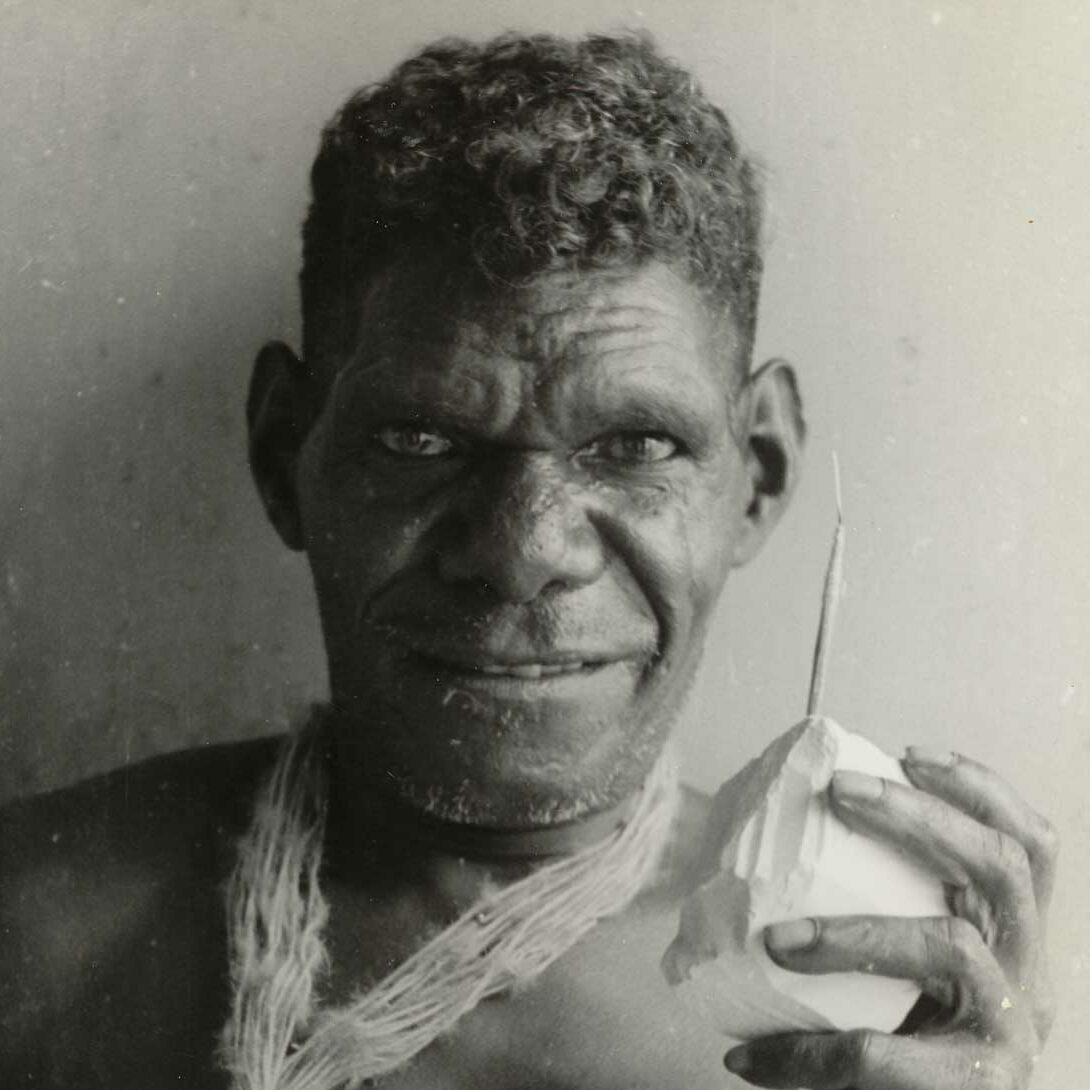
Clan
Maŋgalili
Artist Dates
c.1916-1981
Alternative Names
Naridjin, Naritjin, Narridjin, Ngaradjin
Narritjin Maymuru
Narritjin Maymuru was one of the most significant figures in the development of the painting movement at Yirrkala. The driving force behind the Yirrkala Church Panels, he actively encouraged art making as a means of economic development, which would lead to the foundation of the Yirrkala Art Center in 1976. Along with Mawalan Marika, Narritjin was one of the first men to teach his daughters to paint. In 1978, he was awarded a Creative Arts Fellowship from the Australian National University.
Collections Represented
Art Gallery of New South Wales
Art Gallery of Western Australia
Art Gallery of South Australia
Kluge-Ruhe Aboriginal Art Collection of the University of Virginia
